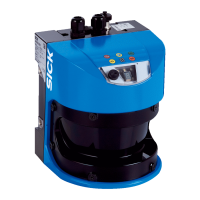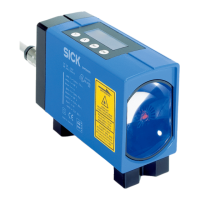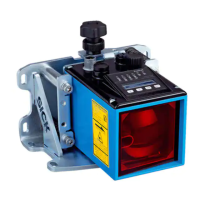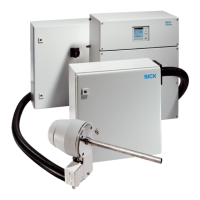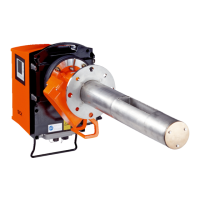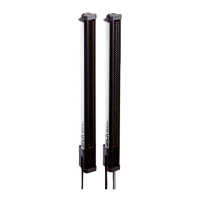OPERATING INSTRUCTIONS | LFP CUBIC 8019918 /ZJA6/ 2017-07-20 | SICK AG
Subject to change without notice
25
7COMMISSIONING
Commissioning
1. Mount the sensor in accordance with the installation conditions, see “5 Mounting”.
2. Log in to expert mode, see “8.4.1 Expert mode”.
3. Select the measuring mode.
• Access the EXPRT-CONFIG-MeasMd menu using the arrow and Set pushbuttons.
• HiSpd: max. length = 2005 mm, response time < 400 ms.
• HiAcc: max. length = 6,005 mm, response time < 2,800 ms, more stable
measured values recommended for liquids with low DKs and where
TrsHld is < 70.
4. Teach-in the static sources of interference in the tank.
• Static sources of interference in the tank generated by tubes, beams,
couplings, or a cleaning ball are taught into the system as standard.
• Access the EXPRT-CONFIG-CalRng menu using the arrow and Set pushbuttons.
The following rules apply:
• Teach-in depth starts from the LFP process connection
• Teach-in depth should cover all interference signals
• Maximum teach-in depth (recommended) = probe length
• Set the value range between 95 mm … 6,005 mm
• If the tank cannot be emptied completely, the CalRng teach-in depth must be
adapted accordingly.
• The level must be at least 200 mm below the CalLen and/or the end of the
probe.
5. Launch the AutCal function.
• Access the AutCal menu using the arrow and Set pushbuttons.
• The following information applies: The probe must not be covered with liquid
in the CalRng set in step 4 (teach-in depth + 200 mm).
• Use the Set pushbutton to conrm the AutCal menu item and then use it again
to conrm the “Ok?” conrmation prompt.
• The AutCal function is conrmed with !CalOK.
6. Analyze the signal quality.
• The signal quality can be analyzed when the device is installed,
see “8.4.9 Evaluating signal quality”.
• In the event of problems:
• Reduce the value in the EXPRT-CONFIG-TrsHld menu.
• Set the parameter to HiAcc in the EXPRT-CONFIG-MeasMd menu.
• Switch on the lters in the Set lters menu.
• Reduce the parameter in the EXPRT-CONFIG-MaxCol menu.
7. Congure the lter (see Chapter “8.4.2 Filtering measured values”).
8. Perform maximum change of level/plausibility check
(see Chapter “8.4.2 Filtering measured values”).
9. Congure outputs (“8.2 Conguring the switching outputs”).
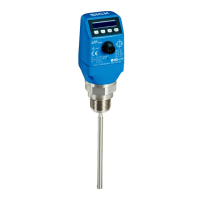
